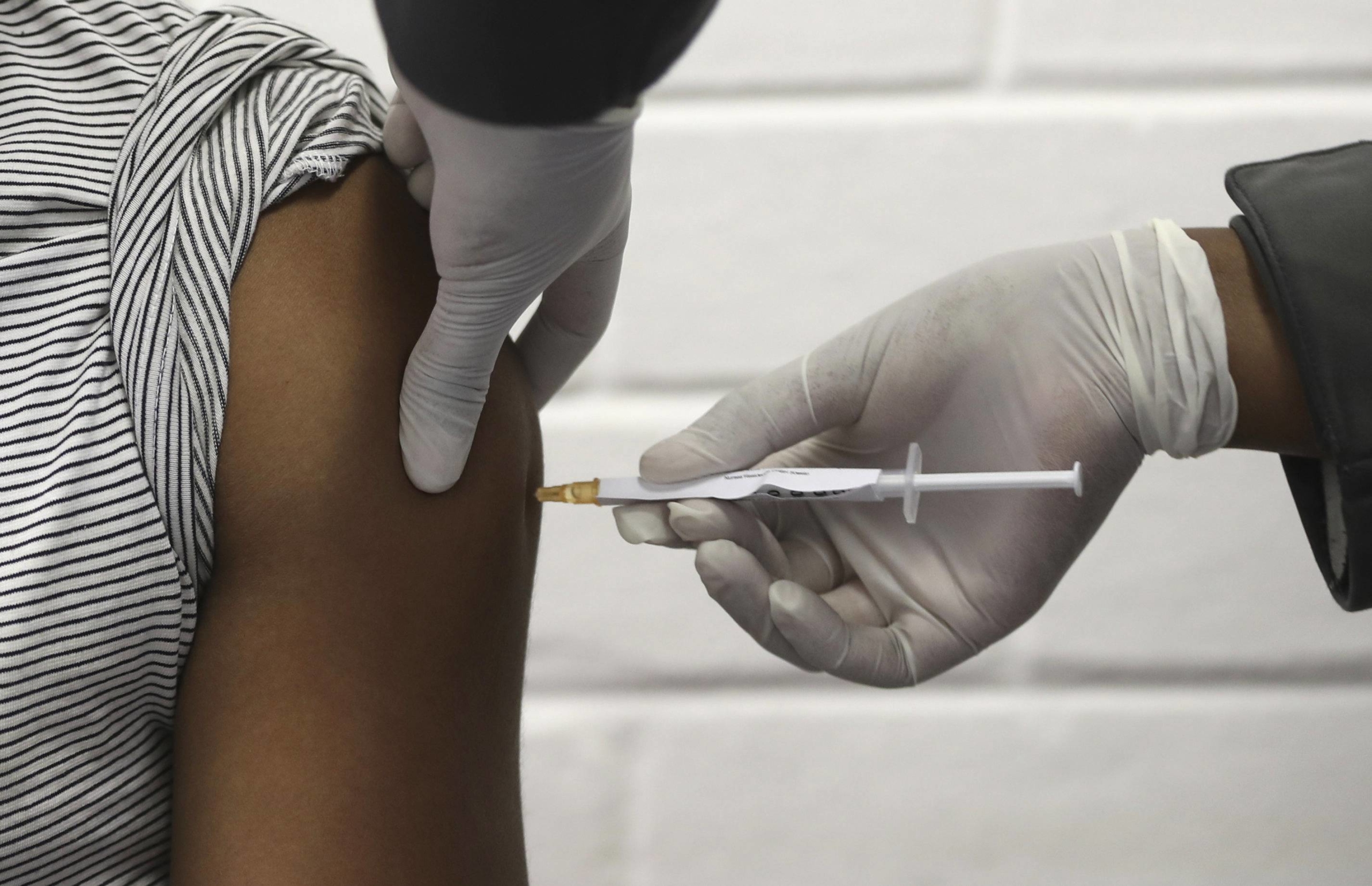
COVID-19 vaccines do a great job preventing severe disease in most people, but they don’t work well for those with a severely compromised immune system.
In healthy people, the current vaccines work by triggering the production of antibodies that bind to the SARS-CoV-2 virus that causes COVID-19, preventing it from infecting healthy cells. But for people with fewer antibodies—including patients with blood cancers or taking medications that suppress their immune response—the body’s response is less effective.
Jonas Heitmann, a hematologist and oncologist at the University Hospital Tübingen in Germany, recognized that many of his cancer patients were at high risk of COVID-19 and knew they needed a different type of vaccine. Heitmann and other researcher have shown that immune cells called T cells that boost the body’s immune response and kill SARS-CoV-2-infected cells were able to step up when the supply of antibodies was limited.
Now, he and his colleagues have developed a vaccine that specifically activates T cells, which they are testing in clinical trials in Germany.
Their hope, Heitmann says, is “to protect those who cannot benefit from currently approved vaccines.”
They’re not the only ones working on T-cell vaccines. Scientists have long suspected that shots targeting T cells might clear viral infections quicker than currently approved vaccines and provide longer-term protection against severe disease, since antibodies wane a few months after vaccination.
Another advantage of T cell vaccines is that, because they recognize features of SARS-CoV-2 that are common to many variants and closely-related sister viruses, they could provide broad protection against future coronavirus infections, says Ramon Arens, an immunologist at Leiden University in the Netherlands.
How do T-cell vaccines differ?
The current batch of vaccines is designed to teach white blood cells, called B cells, to produce antibodies that recognize and bind to proteins found on the surface of the virus, such as the spike protein, the part of the virus that helps it bind to cells. When antibodies bind to a virus instead, it can’t infect the cell. The problem is that the spike protein mutates frequently, changing its appearance and evading any antibodies that no longer recognize it.
Unlike antibodies, T-cells “see” many other parts of the virus: parts that change, including the spike protein, and those that don’t. Scientists are designing COVID-19 T-cell vaccines that help T cells recognize many of the proteins hidden inside SARS-CoV-2, as well as those displayed on its surface.
Because scientists don’t always know which viral proteins will be successful at activating the body’s T cells, they used an algorithm to scour the genetic blueprint of SARS-CoV-2 for suitable proteins and then tested candidates in the lab to find the most effective combination.
Heitmann and his team’s vaccine, called CoVac-1, contains a cocktail of six synthetic viral protein fragments. The mix includes one fragment derived from the spike protein, as well as others from the virus’ envelope, the membrane that mediates entry into host cells, and from the shell that encapsulates the virus’s genetic material.
A French biotechnology company called Osivax has been testing a T-cell vaccine for influenza, and they are now also developing one against SARS-CoV-2 and closely related coronaviruses. Other vaccines like the one developed by Texas-based biotech firm Vaxxinity activate both B and T cells using a mixture of synthetic protein fragments from the SARS-CoV-2 spike, shell, and membrane.
Are T-cell vaccines better for everyone?
Many of these T cell vaccines are in the early stages of testing, though, so it’s too early to tell whether they are better at protecting everyone against COVID-19 compared to the currently used jabs that also elicit a T cell response. However, scientists like Heitmann think it’s very likely that they’ll perform better for people who are severely immunocompromised than the existing options.
In a combined phase one and two trial, Heitmann’s team tested CoVAC-1 in patients who are unable to produce antibodies due to an underlying disease. Preliminary data from 14 participants—many of whom received mRNA vaccine doses that didn’t prove effective—indicated that 13 had a measurable T cell response.
Whether that’s enough to protect against COVID-19, or at least severe outcomes of the disease, is as yet unknown. But there is preliminary evidence from Arens’ Leiden University lab, yet to be peer reviewed, that shows mice vaccinated with three doses of a rodent-specific T-cell vaccine were protected against a lethal SARS-CoV-2 infection.
Shane Crotty, an immunologist at the La Jolla Institute for Immunology in California, argues that there is a downside to T cell vaccines. Many of the T cells activated by an intramuscular shot in the arm tend to circulate in the blood stream rather than concentrate in the nose or throat, where the body first encounters the airborne SARS-CoV-2 virus. It takes a few days till the vaccine-activated T cells reach those sites and control the virus, he says.
Crotty suggests that T-cell vaccines could have a greater impact if they generated local T cells that met the virus at the port of entry. That would mean administering the vaccine through the nose, which is complicated. (Read more about efforts to make COVID-19 vaccines delivered through the nose.)
Scientists also don’t yet know what level of T cells are required to protect against COVID-19. But Crotty suspects a T-cell vaccine may help people who harbor almost undetectable levels of SARS-CoV-2 for weeks to years, which some researchers believe is one cause of the host of lingering symptoms collectively known as long COVID.
After all, the job of certain T cells is to kill off infected cells. “So if you did have a vaccine that was doing that better,” Crotty speculates, “it may have an added benefit in reducing some aspects of long COVID.”



